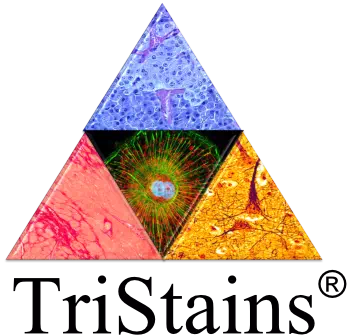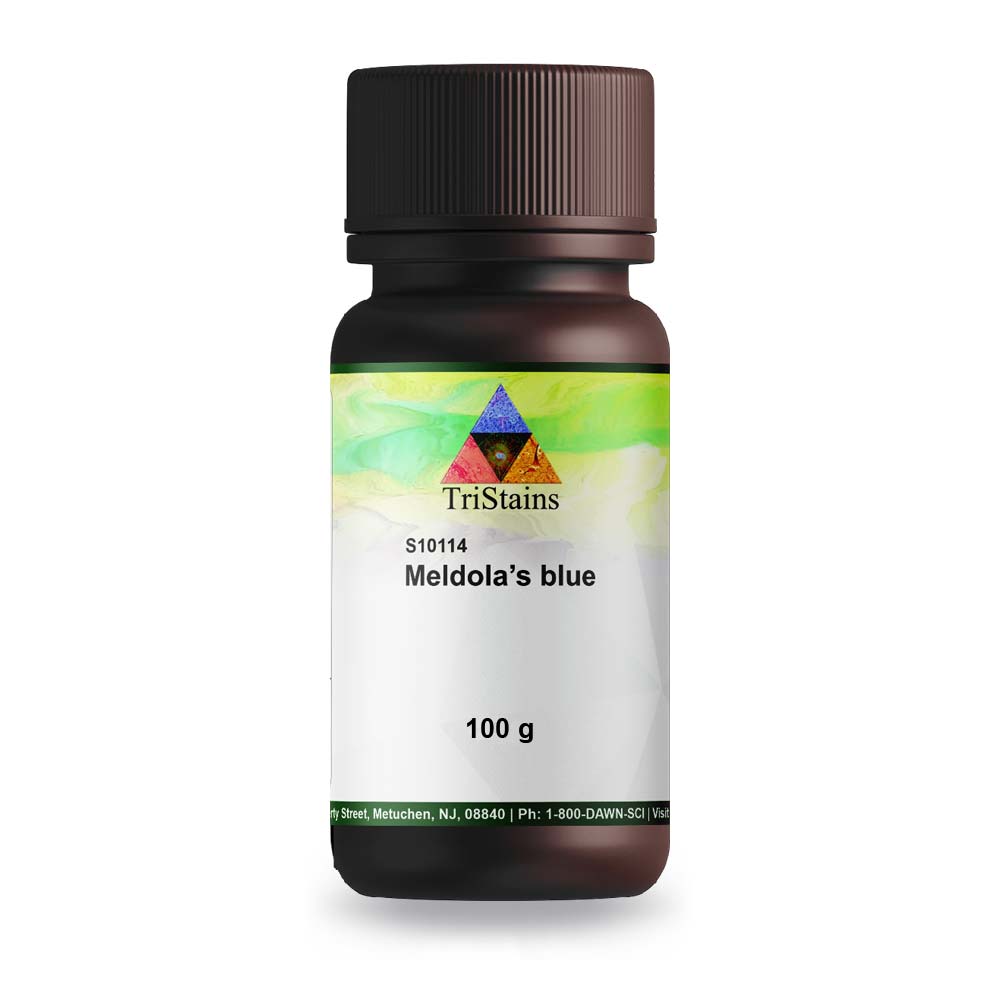Buy High Quality Meldola’s Blue (7057-57-0) MF: C18H15N2OCl•1/2ZnCl2 | MW: 378.9. from Tristains.
Meldola’s Blue is a dark blue to purple crystalline solid. It is also referred to as 8-Dimethylamino-2,3-benzophenoxazine hemi(zinc chloride) salt, Basic Blue 6, Fast blue 3R, Naphthol blue R. This heterocyclic dye compound has the chemical formula C18H15ClN2O · 0.5Cl2Zn. Belonging to the phenoxazine dye family, it features a tricyclic structure with a central pyridine ring flanked by two benzene rings. With a hydroxyl group and an oxo group in its chemical structure, Meldola’s Blue exhibits dye properties and is soluble in water, alcohol, and various organic solvents.
“TriStains”, Histological Stains/Biological Stains that offer range of stains used in Histology, Cytology, Microbiology and Hematology laboratories. TriStains meet the highest quality standards and give excellent color performance of desired components of cells and tissue in life science laboratories. TriStains series products are carefully tested to ensure accurate, reliable, and reproducible results. Our products are available in different packaging sizes to allow you to get all types of stains & Indicators for your specific purposes from a single source.
In-addition Tristains also deals in numerous Laboratory Supplies, Chemicals, Equipment, Instruments, Reagents, Standard Solutions, Buffers, Histological Stains/Biological Stains & Indicators and many more, for more information please visit our website www.tristains.com or email to [email protected] we will be happy to help you. All Tristains Products are exclusively distributed by Dawn Scientific Inc (https://dawnscientific.com)
Application :
- Meldola’s Blue is widely used as a biological stain in microscopy and histology.
- It is effective in staining nucleic acids (DNA and RNA) and can be used to visualize cellular structures.
- Meldola’s Blue can be used as a redox indicator, changing color in response to changes in oxidation-reduction potential.
- Meldola’s Blue has photochemical properties and can be used in photodynamic therapy and photochemical processes.
Benefits :
- Ability to stain nucleic acids and cellular structures
- Provide clear visualization and analysis of biological samples
- Versatile and stable













Reviews
There are no reviews yet.